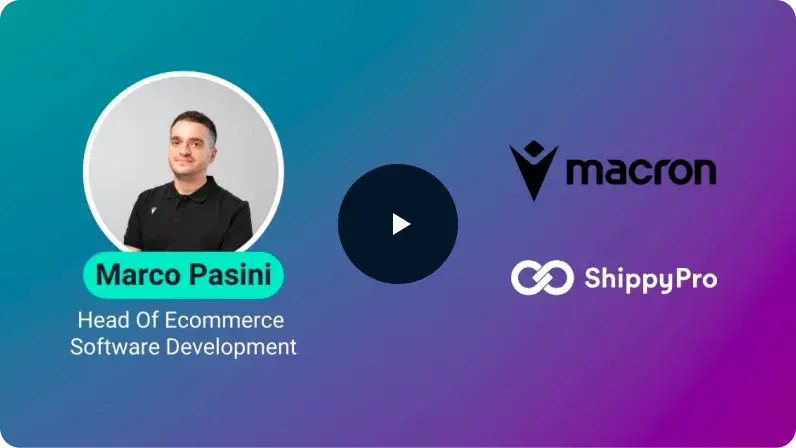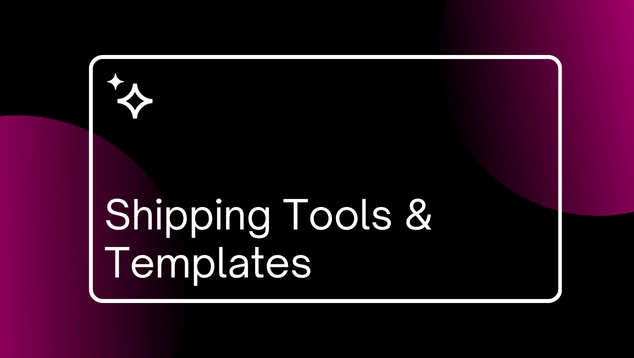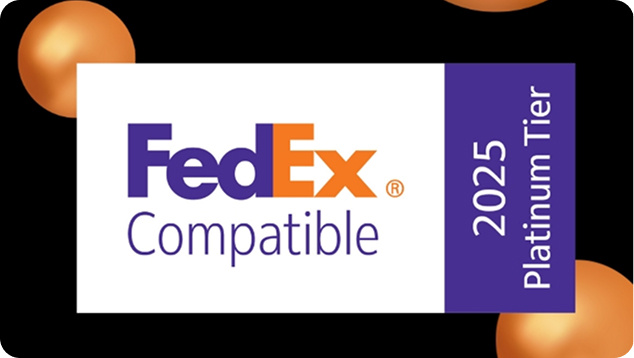Cross-Border Marketplaces in Weeks, Not Months: A Practical Playbook
Expanding internationally shouldn’t take a quarter. Yet too many teams stall on integrations, listings, and logistics. If you’ve ever wrestled with inconsistent product data, marketplace errors, and multi-carrier shipping rules, you know how quickly momentum fades.
That’s why this playbook focuses on speed and control so you can launch cross-border marketplaces in weeks, not months.
Enter Lengow and ShippyPro. Together they connect catalogue quality with delivery performance: Lengow orchestrates listings and offers; ShippyPro powers shipping labels, customs documents, tracking, and analytics. The result is an end-to-end workflow that scales without adding operational drag.
From market selection to fulfilment, cross-border success requires accurate data, adaptive pricing and streamlined shipping. The guide shows how to balance localisation with efficiency, automate catalogue updates, manage carriers and track performance in real time—empowering ecommerce teams to scale internationally with fewer errors, lower costs and faster learning cycles.
Why cross-border ecommerce matters more than ever
Global growth opportunities and rising international demand
Consumer appetite for borderless shopping keeps expanding, and merchants are following suit: in 2025, 64% of ecommerce retailers report selling internationally, with larger businesses leading the charge. That demand makes marketplace distribution a pragmatic first step for cross-border scale.
Why marketplaces are the fastest route to global expansion
Marketplaces compound reach and speed. Independent benchmarks show marketplace GMV growing far faster than overall ecommerce. Faster growth reflects faster onboarding and assortment expansion: key when entering new countries.
Decide Where (and What) to Launch
How to choose the right target markets (size, demand, competition, logistics)
When selecting target geographies for cross-border marketplace expansion, logistics professional must adopt a multi-dimensional decision-matrix rooted in demand data, regulatory burden, carrier network viability and operational latency.
Actionable criteria include:- Category demand elasticity: e.g., apparel & accessories dominate one recent estimate at ~35.3 % share of 2025 cross-border market volume.
- Language and localisation fit: the 2025 data shows ~75 % of cross-border shoppers prefer websites and product content in their native language.
- Regulatory and tax complexity: For example, varying de minimis thresholds and customs regimes (e.g., the EU versus U.S.) materially affect landed cost and duty burden, which in turn influences final-mile conversion.
- Logistics and carrier coverage: Delivery speed remains a major differentiator. ~38 % of cross-border purchases in 2025 were delivered in five days or less, but about 10 % took 15 days or more.
- Competitive landscape and channel saturation: While growth is strong, the major regions are becoming increasingly crowded; choosing a region where your product/offer-set has differentiation (or logistics advantage) can tilt ROI favourably.
In practice, it would be a good idea to run a heat-map scoring each potential country across metrics (demand-growth, delivery-SLA feasibility, duty-transparency, carrier cost-per-parcel) and then prioritise markets with high scores and where fulfilment operations (warehouse, pick-pack, carrier hand-off) can guarantee the promised service levels. This approach reduces the risk of entering a market where high demand exists but logistics yield returns-to-customers (RTCs), late deliveries or hidden duties erode margin and brand trust.
Balancing risk and reward: start with one region, scale fast
Pick a region where your assortment already resonates and your operations can honour delivery promises. Then commit to a repeatable launch template: one marketplace first, two more once KPIs stabilise. The aim is to compress learning cycles without overextending inventory or support teams.
Consider the following:- Operational risk mitigation: A single-region pilot enables the team to validate warehouse throughputs, carrier onboarding, returns processing and customs documentation under real conditions. If you immediately roll into three disparate markets, you risk compounding errors.
- Template creation and process standardisation: Post-launch, you capture reusable templates (feed mappings, shipping rules, zone-SLA definitions, returns-workflow, duty/VAT logic) that reduce time-to-launch for the next region by perhaps 30-50 %.
- Inventory and support-team control: Launching multiple regions concurrently often stresses inventory pooling, localised labels, multiple currencies and local support teams. A single region allows focus on SOPs, KPIs and consolidation of metrics (OTIF – On Time In Full, return rate, customs-exception rate).
Market-entry timing: why speed matters in ecommerce
With the global cross-border market projected to expand at a compound annual growth rate of around 15% through 2034 (Precedence Research, 2025), even minor launch delays can erode first-mover advantage.
Marketplaces reward sellers that achieve early activation, maintain live stock and demonstrate fulfilment reliability, while slower entrants risk missing seasonal peaks or losing visibility in algorithmic rankings. Manual integrations and channel-specific setups introduce costly drag every additional week before go-live represents unrealised revenue and deferred customer feedback.
A timely launch allows logistics teams to stabilise volumes, benchmark carrier performance and fine-tune service levels before scaling. Ultimately, speed to market is not haste but preparedness: the capacity to activate markets rapidly because systems, data flows and carriers are already synchronised.
Market and category prioritisation
Analysing demand data to identify winning categories
Effective category selection starts with quantifiable signals rather than assumptions. By aggregating marketplace analytics, competitive price indices and sell-through velocity, teams can distinguish between transient trends and sustained demand.
Tools such as Lengow’s Market Intelligence (NetRivals and NetMonitor) convert real-time pricing and availability data into actionable insights. With NetRivals, retailers can pinpoint the most profitable categories where supply stability and gross margins align, while NetMonitor helps brands identify reseller markets that are either highly profitable or overly saturated. This data-driven approach reduces exposure to volatile SKUs and overcrowded markets, and guides stock allocation based on measurable elasticity.
Understanding local preferences and product regulations
Compliance and consumer expectations vary sharply between markets, demanding precise localisation at both product and operational levels. For instance, EU marketplaces require CE marking, REACH conformity and detailed material disclosures, while in the US, FTC labelling and Prop 65 rules may apply.
Mirakl-based platforms validate product and offer feeds separately to ensure conformity before listings go live, meaning that taxonomy mapping and attribute accuracy directly impact time-to-market. A logistics team aligned with compliance officers can pre-empt rejections by embedding regulatory fields within PIM or feed-management systems. The result is predictable onboarding, fewer catalogue errors and faster SKU activation across multiple jurisdictions.
Adapting pricing and messaging to each marketplace
Local language, relevant attributes, and market-aligned pricing matter. With 76% of shoppers preferring product information in their own language, pairing localisation with dynamic pricing makes listings both findable and competitive from day one.
Ultimately, success in marketplace expansion depends on a unified system where localisation, pricing automation and brand tone remain synchronised across channels.
Build a strong cross-border assortment strategy
How to select the right mix of products for each market
Lead with SKUs that already prove repeat purchase and low return rates at home. Then add country-specific winners identified via search/share-of-shelf and price corridors. Keep fragile, oversized, or compliance-heavy items for later waves until carriers and service levels are verified.
Balancing local trends and core brand identity
Localise positioning without diluting brand signals. Titles and images should match marketplace SEO conventions, but value props—quality guarantees, materials, sustainability—should remain recognisably yours.
Managing inventory efficiently across multiple marketplaces
Rely on a single source of truth for stock and offers. Lengow’s order synchronisation keeps offers current across channels, while ShippyPro orchestrates carrier selection and label creation to keep fulfilment flowing even as volumes rise.
Prepare your catalog for cross-border success
The importance of localised product data and taxonomy
In international marketplace operations, the discipline of mapping your SKU attributes to the destination taxonomy is often the hinge between launch success and avoidable delays.
It is no longer sufficient to replicate a domestic product feed and hope it works abroad: for instance, missing or mismatched EAN/GTIN codes, unsupported category trees or mismapped taxonomy levels frequently trigger automatic feed rejections. Poor taxonomy structure reduces discoverability and compromises performance.
A robust strategy mandates the use of a centralised PIM or feed-management system where you define attribute-mapping once (title, colour, size, material, compliance flags) and deploy globally. By doing so you reduce one-off edits and feed errors, accelerate go-live and retain operational control.
Optimising titles, descriptions, and images for international SEO
As you scale listings across borders, the quality of copy and visuals becomes a critical fulcrum of visibility and conversion. Titles should incorporate high‐intent modifiers relevant to the local audience (for example “UK next-day delivery”, “EU warranty”, “French size chart”) while adhering to local sizing conventions and measurement units (cm vs inches, UK vs EU sizing).
Images also matter: they must meet marketplace specifications (correct angle, background, resolution, white space, no watermarks) to avoid automatic suppression. According to feed optimisation research, fully-enriched feeds with well-structured titles and images outperform bare listings by 15-25% in traffic and sales.
Ignoring these details may cost you impressions, rank and ultimately conversion in your target market.
Automating updates and avoiding listing errors
When you’re managing thousands or tens of thousands of SKUs across multiple territories, manual feed edits create a maintenance burden and increase risk of catalogue error. Advanced operations automate price and stock synchronisation, apply rule-based exclusions for SKUs with low margin or regulatory risk, and feed validation alerting for missing fields or non-compliant attributes. For example, AI-enhanced attribute normalisation platforms report 70-80% reduction in manual effort and significant drop in feed rejections.
This kind of automation ensures that your launch pipeline remains lean, you spend less on time-consuming corrections, and you maintain higher time-to-market consistency as you expand into new marketplaces.
Meet Lengow and ShippyPro: a partnership for global Acceleration
What Lengow does — Product data management and marketplace automation
Lengow provides a comprehensive e-commerce omnichannel management suite that enables brands and retailers to centralise, optimise and syndicate product data across more than 70 marketplaces in over 40 countrie.
With intelligent catalogue enrichment, automated mapping, and integrated validation rules, Lengow transforms static product information into dynamic, marketplace-compliant listings. Its NetMarkets module supports agile content adaptation and rule-based segmentation, while NetRivals delivers price intelligence and competitive monitoring across more than 35,000 websites.
The platform’s automation allows e-commerce teams to set transformation logic once and deploy at scale, accelerating time-to-market and maintaining data consistency across all sales channels, from Amazon to Zalando and beyond.
What ShippyPro does — Multi-carrier shipping, tracking, and automation
ShippyPro connects retailers to a network of over 180 carriers worldwide, consolidating shipping, tracking and returns management into a single automation layer.
Its platform optimises the post-checkout experience through smart cost control, shipping analytics, and automated return flows, helping retailers achieve measurable operational impact — including a 30 % reduction in shipping costs and 60 % faster order fulfilment.
ShippyPro automates label generation, customs form creation, live rates at checkout, and proactive delivery notifications. This results in consistent cross-border performance, fewer exceptions, and improved customer satisfaction.
For enterprise operations, ShippyPro functions as a scalability layer that transforms fragmented carrier relationships into a transparent, data-driven fulfilment ecosystem.
Why the integration matters: end-to-end efficiency from listing to delivery
The integration between Lengow and ShippyPro bridges the traditional gap between product data orchestration and fulfilment execution, delivering an end-to-end commerce workflow from catalogue to carrier.
Lengow centralises listings, pricing and stock synchronisation, while ShippyPro automates label creation, customs, tracking and returns.
Together, they create a single operational continuum — marketplace orders flow seamlessly from Lengow’s order management API into ShippyPro’s fulfilment engine for routing and delivery.
This synergy not only reduces manual handling but also enhances cross-departmental visibility, allowing brands to scale internationally with fewer errors, lower overhead and a 22% increase in marketplace revenue through faster go-lives and smarter logistics coordination.
How to expand to cross-border marketplaces in weeks
Step 1: Connect your ecommerce platform and marketplaces through Lengow
Plug in your shop/PIM and choose target marketplaces. Leverage ready-to-use channel templates and error reports to validate mappings and push clean listings. Keep the launch surface small; broaden once orders flow.
- Actions: Map required attributes; enable order sync; set initial price rules.
Step 2: Sync product catalogues and automate localisation
Apply language, currency, and compliance rules by country. Use NetMarkets’ rule engine to adapt titles, attributes, and pricing for each channel without duplicating work. Lock your duty/returns policy into offer text for clarity.
- Actions: Create country-specific filters; automate price rounding; surface care/size details.
Step 3: Use ShippyPro to automate shipping, label generation, and tracking
Connect carriers once, then let shipping rules pick the optimal service by weight, destination, and SLA. Generate labels in bulk, attach customs data, and trigger branded tracking—so customers always know what’s next.
- Actions: Configure service rules; enable notifications; add paperless customs where available.
Step 4: Monitor performance and optimise fulfilment
Watch transit times, exception hotspots, and per-carrier costs. ShippyPro Analytics and the Optimizer give you shipping intelligence to improve OTIF and budget control without guesswork.
- Actions: Set weekly KPIs; switch underperforming services; tune packing and pickup windows.
Bonus: Scale to new countries using the same workflow
Repeat the template: add a marketplace, inherit mappings, extend shipping rules, validate KPIs. With expanded pickup-point coverage and regulatory updates supported in-product, each new launch gets easier.
4 real benefits for ecommerce businesses
Faster go-to-market time (weeks vs. months)
Pre-built connectors, rule engines, and validation templates shorten marketplace onboarding from months to weeks. This acceleration enables brands to capture seasonal demand earlier, validate operational KPIs in real time, and refine listings post-launch, turning the go-live phase into a structured learning cycle rather than a bottleneck.
STAR srl
 For example, Italian beauty company STAR expanded its reach across multiple European marketplaces using Lengow’s automated product feed management. By integrating with Lengow’s pre-configured templates and ShippyPro’s shipping automation, STAR Srl launched new cross-border channels in record time moving from local to international sales in just a few weeks.
For example, Italian beauty company STAR expanded its reach across multiple European marketplaces using Lengow’s automated product feed management. By integrating with Lengow’s pre-configured templates and ShippyPro’s shipping automation, STAR Srl launched new cross-border channels in record time moving from local to international sales in just a few weeks.
With Lengow and ShippyPro working together, STAR Srl improved the delivery experience on all its marketplaces offering faster delivery updates and smoother return handling, which directly boosted post-purchase satisfaction and repeat orders.
Reduced manual work and fewer operational errors
Automation eliminates repetitive data handling and channel-specific adjustments, cutting first-upload error rates by up to 60%. Centralised feed management and automated synchronisation allow teams to focus on strategic catalogue planning and customer experience improvements rather than troubleshooting feed mismatches or order discrepancies.
Unified order management and global visibility
By integrating Lengow’s marketplace management with ShippyPro’s fulfilment automation, retailers gain a single operational view of orders, offers, and labels. Real-time synchronisation across systems ensures inventory accuracy, performance tracking, and proactive issue resolution—essential for scaling international operations while maintaining predictable fulfilment cycles.
Seamless customer experience, from checkout to doorstep
Live rates, proactive delivery updates, and automated returns flows streamline post-purchase interactions. Customers benefit from transparent duties, reliable delivery estimates, and branded tracking, while merchants reduce re-delivery costs and support tickets. This end-to-end visibility builds trust and loyalty in new cross-border markets where reliability defines reputation.
Conclusion
Cross-border scale doesn’t demand bigger teams; it demands tighter systems. Pairing Lengow for catalogue excellence with ShippyPro for delivery execution gives you a repeatable path to enter markets, learn quickly, and grow with confidence. Start small, ship fast, and let the data guide your next move.
Want a practical plan to go live in weeks? Explore how Lengow and ShippyPro streamline marketplaces—from listing to delivery—so you launch faster with fewer moving parts.
ShippyPro is the complete shipping software for online and offline retail. With Label Creator, Track & Trace, Easy Return and Analytics features, our software simplifies your shipping operations. ShippyPro integrates with over 180 carriers and 80 sales channels, making it compatible with a wide range of products and use cases.













